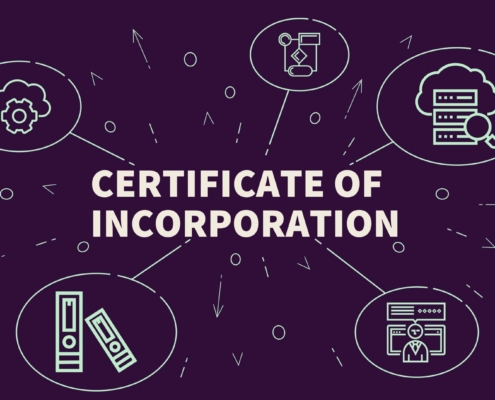How is a sole proprietorship different than a single-member LLC?
It is essential to have a thorough understanding of the advantages and disadvantages of two common business structures, namely the limited liability company (LLC) and the sole proprietorship, prior to beginning a new business under sole ownership.
Thinking about the ownership and control of the company, asset protection, and tax consequences are just a few of the many factors to think about when deciding on a business structure.
As you start the evaluation process, don’t forget to –
- Learn the ins and outs of both sole proprietorships and limited liability companies.
- Consider the benefits and drawbacks of each option in light of your company’s specific requirements.
- Keep in mind that your specific circumstances dictate the most appropriate course of action for your company.
- Before deciding on an LLC or sole proprietorship, it’s a good idea to weigh the pros and cons of each.
For those unfamiliar, a single-member limited liability company is…
A limited liability company (LLC) with just one owner or member is among the most prevalent forms of American small business. Companies can enjoy limited liability protection and pass-through taxes by forming this type of business entity and registering it in the state of creation. This state is often where the organization does business.
In contrast to limited liability companies (LLCs) with several owners, “single-member” denotes that there is only one owner of the business. Members are the proprietors of a limited liability company. All the benefits and drawbacks of a multi-member LLC apply to a single-member LLC as well.
The steps needed to establish an LLC vary from one state to the next. Either create your limited liability company (LLC) in the state where your firm is physically located, or in a separate state. An LLC’s “foreign” states are all those states that are not its original formation state. To conduct business in certain states, you must first meet the international qualification requirements. The business entity filing office in that state is the usual place to submit an application for authority.
Benefits of a limited liability company with just one owner
When compared to operating as a sole proprietorship, creating a limited liability company (LLC) offers a number of advantages.
In most cases, the members of a single-member limited liability company (LLC) are protected from liability for company obligations.
Be wary of mixing your personal and company funds in a single-member limited liability company. This might result in what is known as “piercing the corporate veil,” which would mean that you would lose your access to limited liability.
The Internal Revenue Service considers a limited liability corporation with only one owner to be a “disregarded entity” as the person and the business are considered to be one and the same. Tax authorities see it as a sole proprietorship by default. But you may choose a different tax rate if you want to.
The owner of an LLC is personally liable for the business’s income taxes, just like the owner of a sole proprietorship. One option available to owners of single-member limited liability companies is to select between C corporation and S corporation taxation. When you choose to operate as a sole proprietorship, this is not an option.
A single-member limited liability company also has other advantages, such as:
Keeping property safe: If you operate a medium- or higher-risk firm or have substantial personal assets that you would like to keep protected, an LLC may be the way to go. This is due to the fact that owners are protected from any personal responsibility for the actions of the LLC. Therefore, creditors cannot seize your house or savings account to settle the company obligations.
Different legal organization: From a legal standpoint, an LLC is distinct from its owner. Your limited liability company (LLC) will be personally liable for any contracts, agreements, or debts it incurs as a result of its operations.
Credibility: When compared to operating as a sole proprietorship, becoming an LLC may provide new businesses an advantage when trying to build its reputation.
Paying taxes: In most cases, LLCs are exempt from paying taxes as a business. The proprietors’ individual income tax returns reflect any profit or loss incurred by the firm. Every person is responsible for paying their own taxes.
In the end, if you don’t plan ahead, an LLC’s lifespan can be short. Many states require the dissolution of limited liability companies (LLCs) when they become defunct due to the loss of a member. According to state law, a single-member limited liability company (LLC) can stay in business by including provisions in its operating agreement, such as designating a representative to assume control. One advantage of a limited liability company (LLC) over a single proprietorship is that it can survive the owner’s death.
The drawbacks of an LLC with only one member
A single-member limited liability company (LLC) has numerous advantages, but you should also be aware of its drawbacks.
Cost is the primary consideration. There are one-time costs associated with forming an LLC and continuing costs, such as franchise taxes and yearly report fees.
You must choose a registered agent in the state before you can file the paperwork to establish your limited liability company. It is helpful to have someone else, such as a corporate service firm, receive legal documents on your behalf when you are involved in a lawsuit or other legal matter. Include the name and address of the registered agent in the formation paperwork.
A limited liability company (LLC) with only one member must also meet certain extra requirements, such as:
Restriction on names: Name requirements for limited liability companies (LLCs) vary by state, but often contain the terms “Limited Liability Company” or “LLC” in the name. Additionally, the name of your limited liability company (LLC) must be distinct from all other names of domestic and international LLCs as well as other business organizations recorded with the relevant business entity filing agency.
Need for publication: Publishing notice of your LLC creation in a local newspaper or an initial report filing may be sufficient, but some states additionally require filing with the county.
Legal documents: Payment of franchise taxes and completion of periodic files, including yearly or biannual reports, are further requirements in the majority of states. Make sure you are aware of all possible requirements, as these additional filings and charges might differ from one state to another.
If you are not well-versed in the regulations that govern the responsibilities of your limited liability company (LLC), you should be aware that accidental administrative dissolution can occur with relative ease. For instance, your limited liability company (LLC) might be dissolved if you fail to pay franchise taxes, even if you were under the impression that you weren’t required to pay them due to your exclusion from state income tax.
How do you define a sole proprietorship?
The simplest company structure is the sole proprietorship. A sole proprietorship is the default legal status for any firm that begins operations without first forming a special legal organization. In other words:
- One individual owns and operates your firm as an unincorporated entity.
- There is no legal distinction between you and your company.
- There is no legal distinction between your personal wealth and the assets and debts of your company.
One key distinction from an LLC is that, under a sole proprietorship, your personal assets are considered part of the firm and its debts and responsibilities.
A sole proprietorship versus a DBA
You can run a business as a sole proprietorship. There are a number of factors, including tax implications, personal accountability, and the requirements for creating a company, that influence the business structure you choose.
The “doing business as” (DBA) designation does not apply to legal entities. To let the public know that a company is doing business under a different name than its legal one, it must file a formal document with the relevant local government. Another name for a DBA is a trade name, assumed name, or false name.
The benefits of being a sole proprietor
Businesses with a low risk profile or entrepreneurs looking to put their company idea to the test before committing to a more formal corporate formation might benefit from forming a sole proprietorship. Therefore, there are many benefits:
- Cost: For entrepreneurs who are short on capital, forming a sole proprietorship—which doesn’t cost anything—is a great choice.
- Control: The proprietor keeps full authority and possession of the enterprise. There can be just one owner in a sole proprietorship, and that person gets to keep all the money and run the show.
- Maintenance: When a sole proprietorship ends, dissolving it is simple. You should remember to terminate any registrations and licenses linked with the company even if, by definition, you are no longer a sole proprietorship when you cease operations. For businesses that have registered a “doing business as” (DBA) name, this also includes cancelling that name.
- Taxes: Managing your taxes is a breeze. All you have to do is fill out IRS Schedule C.
Drawbacks of operating as a sole proprietorship
Before deciding on a sole proprietorship, think about the drawbacks. The potential cost savings are attractive, but this organizational setup isn’t without its flaws.
- Potential risk of legal action: Being personally liable for any debts or injuries incurred by your company is the biggest drawback of operating as a sole proprietor. If your firm goes bankrupt or incurs commitments that you aren’t able to pay, creditors or lawsuit plaintiffs can take your personal belongings and money from your bank accounts.
- Generating capital: The inability to sell shares of stock makes it difficult to raise capital for a sole proprietorship. It is tough to acquire a loan as a sole proprietorship since banks are hesitant to do so.
- Ownership regulations that are very strict: You must apply for an Employer Identification Number (EIN) whenever your company changes hands or if you want to incorporate. A sole proprietorship can transform into a general partnership with the addition of an additional owner. You can’t use your social security number anymore as you’re not the only owner anymore. On top of that, you have to submit separate K-1s for each partner’s share, as well as Form 1065—US Return of Partnership Income—to record profits and losses.
Analysis of limited liability company vs. sole proprietorship
There are benefits to both sole proprietorships and limited liability companies with one member. In terms of documentation and tax obligations, there are numerous similarities among the choices. Do your research before making a decision.
You must include your business income and costs on Schedule C of Form 1040 if you are a sole proprietor or owner of a one-member limited liability company. You will be subject to taxes on the net income regardless of whether you take money out of the company or not.
You will not be able to deduct business costs from your gross income unless you itemize. Keeping meticulous records of your earnings and outlays is, thus, crucial. Doing so guarantees that you may claim all of the allowed deductions.
Things to keep in mind is that whether you’re an LLC or a single proprietorship, you can deduct business-related costs like gas, meals, entertainment, office supplies, and home office use. You can claim all of your health insurance premiums as a company expenditure, even if you pay for your personal coverage.
It is necessary to obtain a taxpayer identification number, in addition to withholding and paying payroll taxes, if you have any employees, regardless of whether you are a sole proprietorship or an LLC. You may think of your social security number as your tax ID if you don’t have any workers.
Regardless of the business form you choose, you will always be responsible for maintaining all necessary licenses and permissions. Businesses are typically required to comply with these regulations by state and local governments, such as counties, towns, or cities. In some situations, though, the federal government does too. No matter if you go with an LLC or go solo, you need to know what your responsibilities are as a business owner.
When you’re a sole owner, you have the option of using your real name or a “assumed business name” (also called a DBA, fake name, or d/b/a). In the same way, if your limited liability company (LLC) has just one member, you are free to use the name that appears on the formation paperwork to do business. Alternately, the LLC might file for its own DBA.
Exploring the Differences Between LLCs and Sole Proprietorships
Differences between sole proprietorships and limited liability companies are substantial. The main distinction is whether, as with an LLC, you have limited liability for the debts and obligations of the company or if, in the case of a lawsuit or debt collection, the business’s liabilities and obligations fall to your personal assets.
The responsibility and legal protection afforded by an LLC are unparalleled. If you’re worried about being personally responsible for thousands of dollars in damages as a sole proprietor, it may be worth it to pay the filing expenses to form an LLC.
However, forming a sole proprietorship does not require any initial capital. At any point in time, you are free to switch to an LLC or another type of structure. If you want to dissolve the company, you may do it by simply ceasing operations (and revoking any relevant licenses and permissions).
Last but not least, there are a lot of upfront and continuing costs and paperwork involved with LLCs, in contrast to sole proprietorships, which are subject to far less regulations. If you try to do this on your own, you may end up missing crucial filing deadlines and paying fines as a result.
Summary
Think about your company’s needs carefully while choosing between a sole proprietorship and a one-member limited liability company. While an LLC is more appropriate for a rapidly expanding business that requires capital, a sole proprietorship may be a simple and inexpensive choice for an entrepreneur testing the waters. Before settling on a course of action, it’s important to assess all of your available alternatives, from financial to operational, in light of your company’s goals.






























